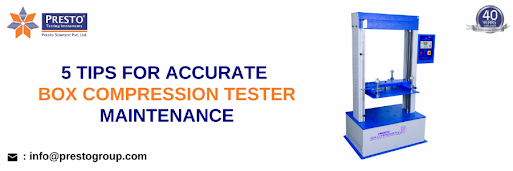Test Coefficient Of Friction For Maximum Packaging Performance
Frictional properties of materials are important for a variety of applications. From packaging films to laminates and more, paper & packaging manufacturers need to know the exact details of how much friction a material can withstand in order to ensure the quality and safety of their products. However, to perform the friction test on the materials, it is important for the manufacturers to use a high-quality lab testing instrument known as a coefficient of friction tester.
This is one of the high-quality lab testing equipment that will help the manufacturers in testing the sliding friction of plastic films and sheets. This quality friction tester has been manufactured as per different industrial standards that include ASTM D618, ASTM D 883, BS 2782, and ASTM D 1894.
In this blog, we are going to provide you with information about the coefficient of friction tester and how this lab testing equipment is highly useful in testing the frictional properties of the materials, and how you can measure the frictional properties of the materials to ensure maximum packaging performance. So, let us get started!
Testing the frictional properties of materials with a friction tester
Frictional properties are important to test because they can help to determine the lifespan of a material. The amount of friction a material can withstand before it breaks down can be an indicator of how long it will last in certain applications. This information can be used to test the frictional properties of the materials and ensure that quality materials will be delivered to the customers.
Understanding the frictional characteristics of materials plays a key role in ensuring both safety and functionality. This knowledge can be used to make informed decisions when it comes to product design, allowing engineers and designers to evaluate potential risks before delivering products to the customers.
You can read more on why you should test the coefficient of friction of packaging films. Now, let us discuss brief information about the Presto co-efficient of friction tester and how it is useful in testing the frictional properties of the materials.
All about Presto co-efficient of friction tester
what is coefficient of friction. Presto is a leading lab testing instrument manufacturer and will help the manufacturers in ensuring that quality materials will be delivered to the customers to ensure accuracy in test results. One of the high-quality testing equipment that has been designed by the experts at Presto is the coefficient of static friction.
The digital model of this quality lab testing equipment will help the manufacturers in optimizing the performance of packaging films and help manufacturers in avoiding any problems that occur due to rough handling and shipping of products.
Presto co-efficient of friction tester will accurately assess how the materials will be stacked over each other. To perform the co-efficient friction test one can easily make use of this quality lab testing equipment. You need to prepare the testing specimen firstfor the coefficient of friction test and place it accurately on this lab testing instrument. This will ensure accuracy in the testing results when the coefficient of friction test will be conducted.
Now, let us discuss briefly the features and technical specifications of this quality lab testing instrument.
Features of Presto co-efficient of friction tester
The coefficient of friction tester is high-quality testing equipment that is designed to make it easy for manufacturers to conduct friction tests on materials. This tester is equipped with a variety of features that allow it to accurately measure the amount of friction between two surfaces.
Additionally, this testing instrument is also able to determine the amount of force required to cause sliding between two surfaces. This information can be very valuable to manufacturers who are looking to create products that have low levels of friction.
Below we have listed the series of features available to conduct co-efficient of friction tests on the materials.
- Clamps are provided to attach samples to the glass slab
- Safety switches are provided at the end surface to stop the motion of the load cell along with the weight
- Gives both dynamic and static friction
- Speed regulating knob
- Digital display for both kinetic and dynamic friction
- Calibrated in accordance with ISO norms, Calibration Certificate provided is traceable to (NABL)
- Helps to determine both static and kinetic friction
Technical specifications of Presto co-efficient of friction tester
- Outer Body Construction: Mild Steel, Powder Coated
- Sample Mounting Construction: Stainless steel with glass mounting
- Load Cell Capacity: 5Kgf
- Motor: Single phase, ¼ H.P
- Display for load: Dual Display- Digital and Computerized
- Block: Weight, Dimension, Thickness: 200gm, 63.5 x 63.5 mm, As per Load
- Speed: 150±30mm/min
- Standards: ASTM D1894, ASTM D202, ASTM D4918, ISO 8295 and TAPPI T815
- Power Supply: 220 V AC, 50 Hz, Single Phase Power Supply
- Safety: Limit Switch
- Weight of slide Clamp: 200g
- Accuracy: 2.5%
- Least Count: 1g
With its precision in determining product quality, one can accurately measure the coefficient of friction of your products. And because it’s so easy to use, you’ll be able to conduct tests quickly and efficiently. So if you’re looking for a reliable way to test the coefficient of friction of your products, the Presto coefficient of friction tester is a perfect choice for determining the product quality. You can easily measure the coefficient of friction value of the product in a standardized way, with the use of this quality testing instrument.
You can also give us a call at +91 9210903903 or email us at info@prestogroup.com, to conduct a free sample testing session regarding the use of this quality testing equipment.
Source link– https://www.prestogroup.com/blog/test-coefficient-of-friction-for-maximum-packaging-performance/




Comments
Post a Comment